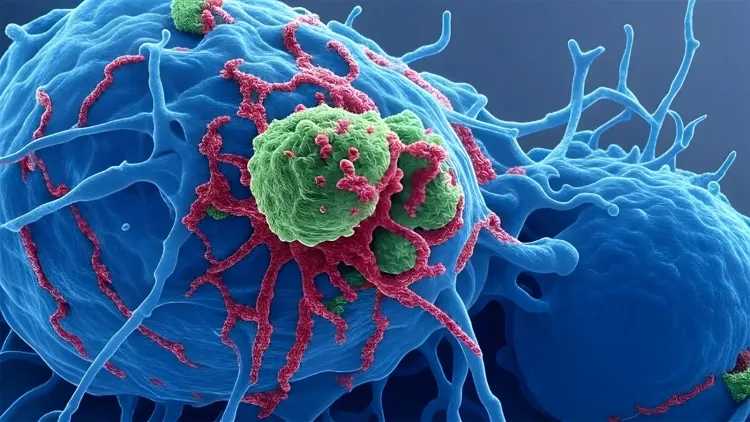What New Genomic Risk Factors Are Linked to Uterine Cancer?

Synopsis
Key Takeaways
- New genomic risk factors for endometrial cancer have been identified.
- Research expanded known risk factors from 16 to 21.
- Study highlights the importance of genetic predisposition in cancer risk.
- NAV3 acts as a tumor suppressor gene in the endometrium.
- Potential development of new preventive strategies and therapies.
New Delhi, Aug 8 (NationPress) An international research team has discovered new genetic risk factors in DNA that contribute to tumor development within the uterine lining.
Endometrial cancer, a prevalent form of gynecological cancer, affects approximately 400,000 women globally each year, resulting in around 100,000 fatalities.
Commonly recognized risk factors include obesity, diabetes, and elevated levels of the sex hormone estrogen. Additionally, the likelihood of developing endometrial cancer increases with age.
However, about 5 percent of cases are attributed to genetic predispositions, such as gene mutations that elevate cancer risk, linked to hereditary syndromes like Lynch syndrome or Cowden syndrome. Nonetheless, a significant portion of the genetic causes remain ambiguous.
The team from Hannover Medical School (MHH) in Germany identified five new regions in the genome potentially involved in endometrial cancer development.
The research findings, published in eBioMedicine, expanded the known genomic risk factors for endometrial cancer from 16 to 21.
"This advancement brings us closer to accurately predicting the risk of hereditary uterine cancer," stated Dr. Thilo Dörk-Bousset, head of the gynecological research unit at MHH.
"The more genes we identify as responsible, the better we can assess the likelihood of a woman developing endometrial cancer," Dörk-Bousset emphasized.
For this study, the researchers compiled genetic data from national biobanks across various countries, comparing the genetic alterations in over 17,000 patients with endometrial cancer against the genomes of approximately 290,000 healthy women.
The results were validated in an additional set of participants.
The team conducted an in-depth analysis of one of the newly identified risk genes, known as Navigator-3 (NAV3), using specialized target lines derived from uterine tissue. Deactivating NAV3 resulted in accelerated cell growth, while excessive NAV3 activity caused cell death.
"These findings indicate that NAV3 typically restrains cell growth in the endometrium, acting as a tumor suppressor gene to inhibit cancer formation," explained Dr. Dhanya Ramachandran, a molecular biologist at MHH.
"Consequently, NAV3 levels are significantly diminished in endometrial carcinomas."
This research may pave the way for developing potential preventive measures and innovative therapeutic strategies, the team noted.









